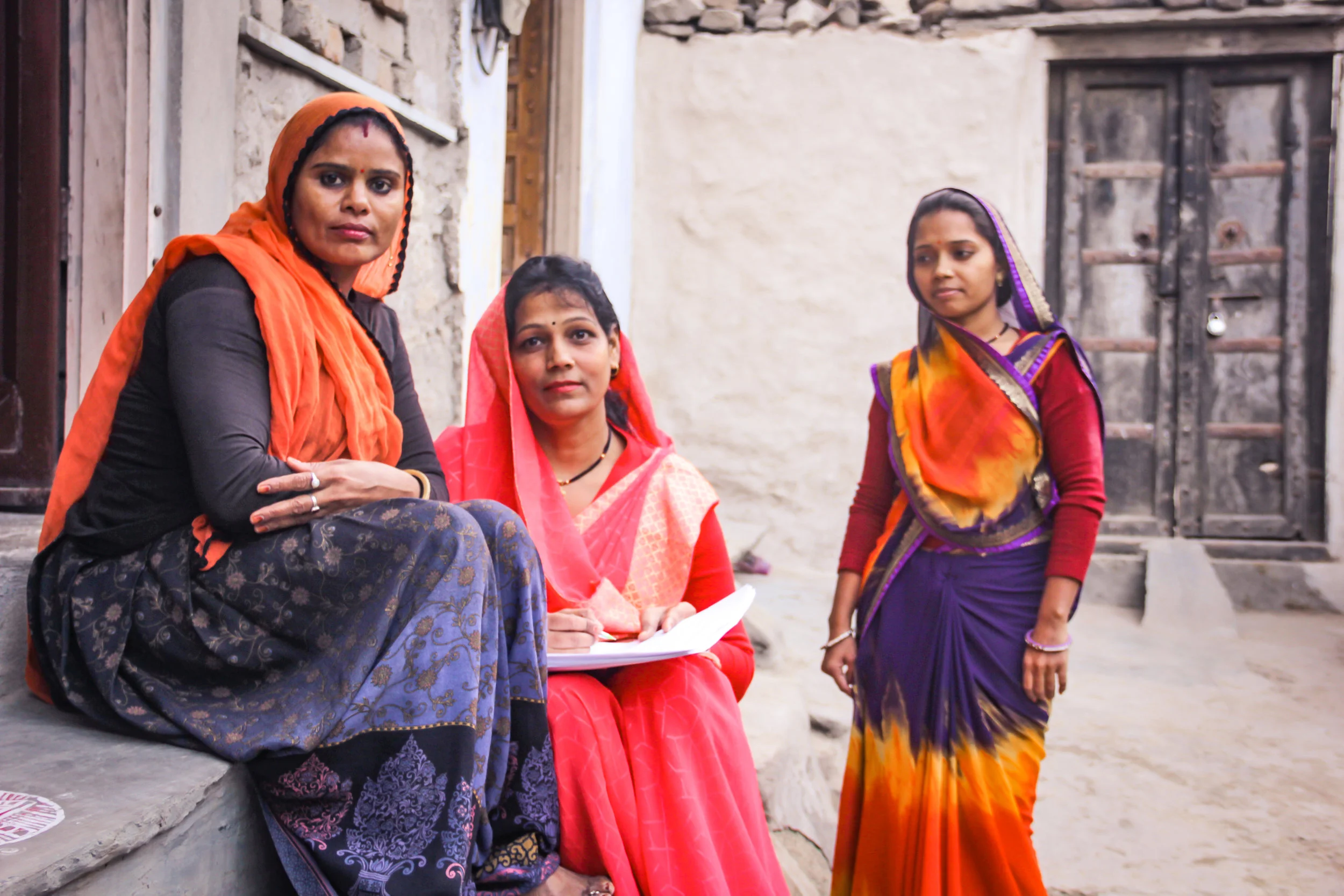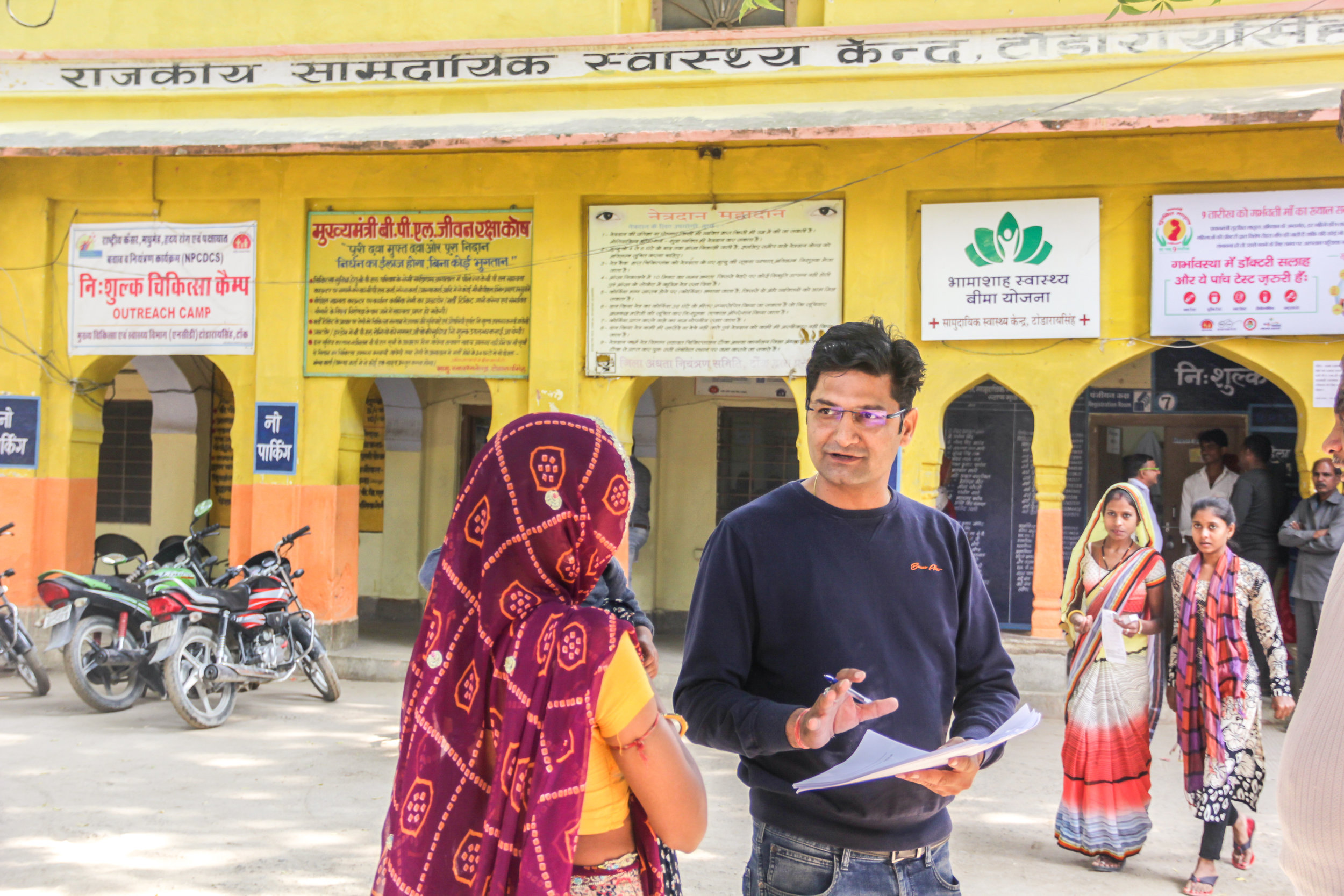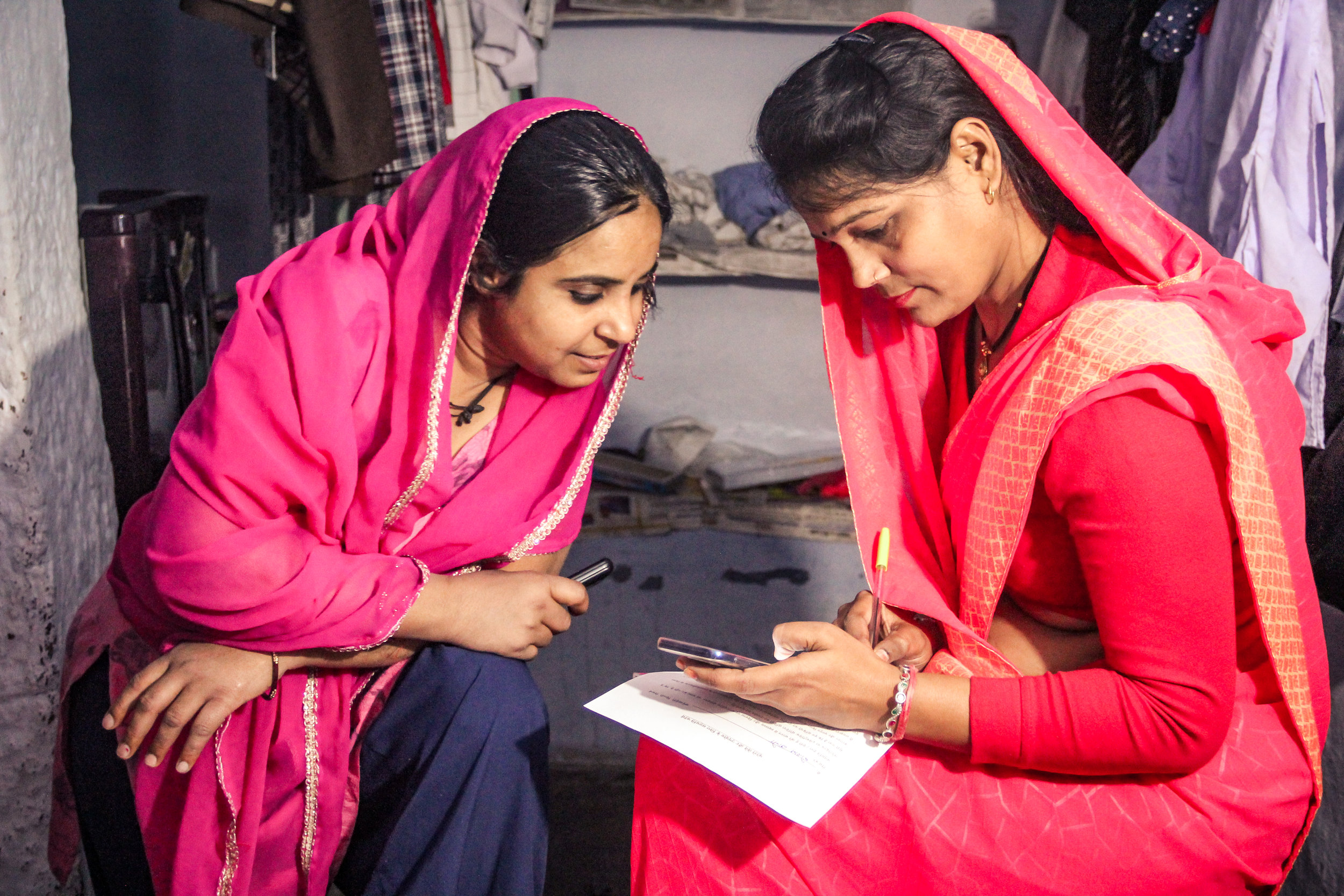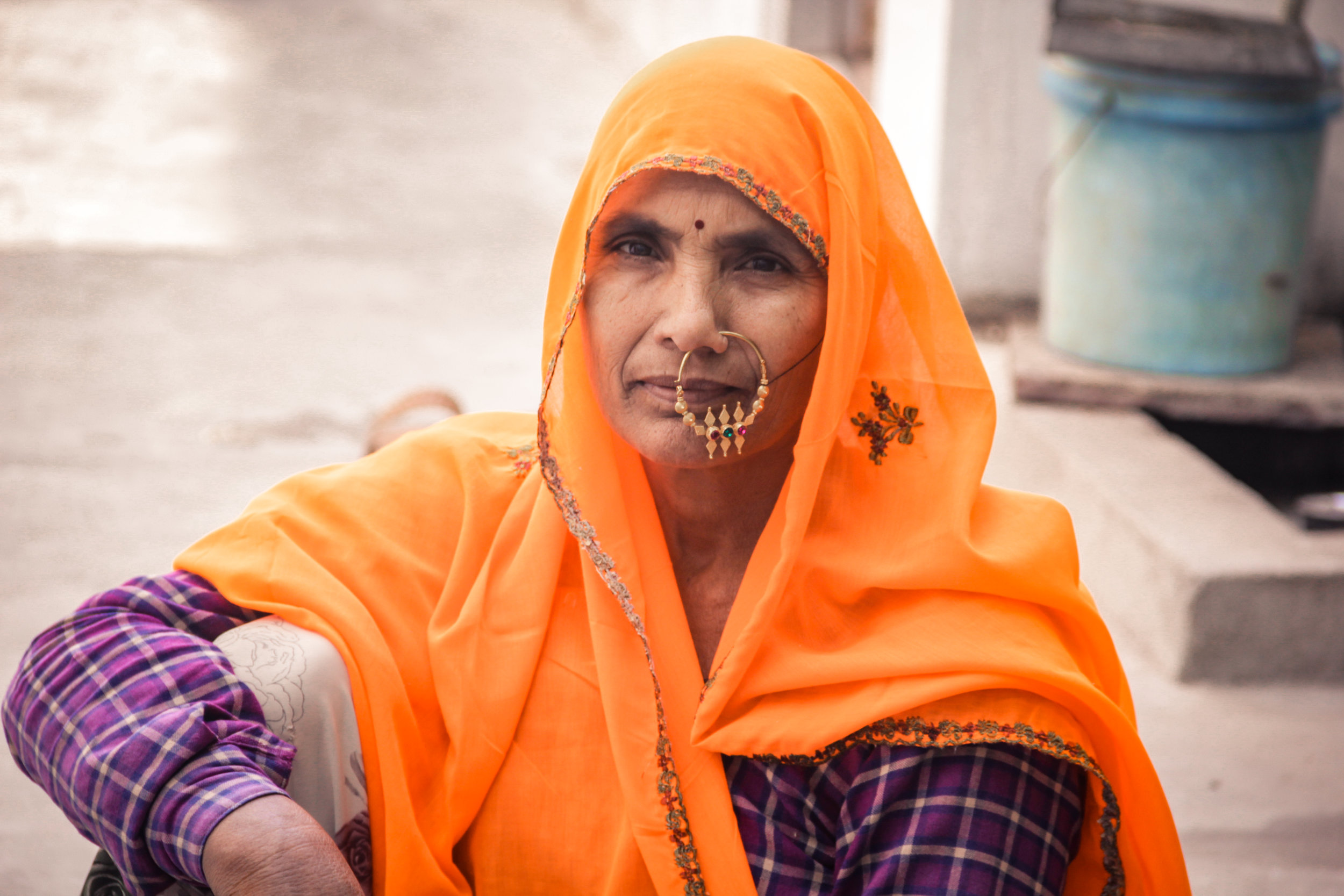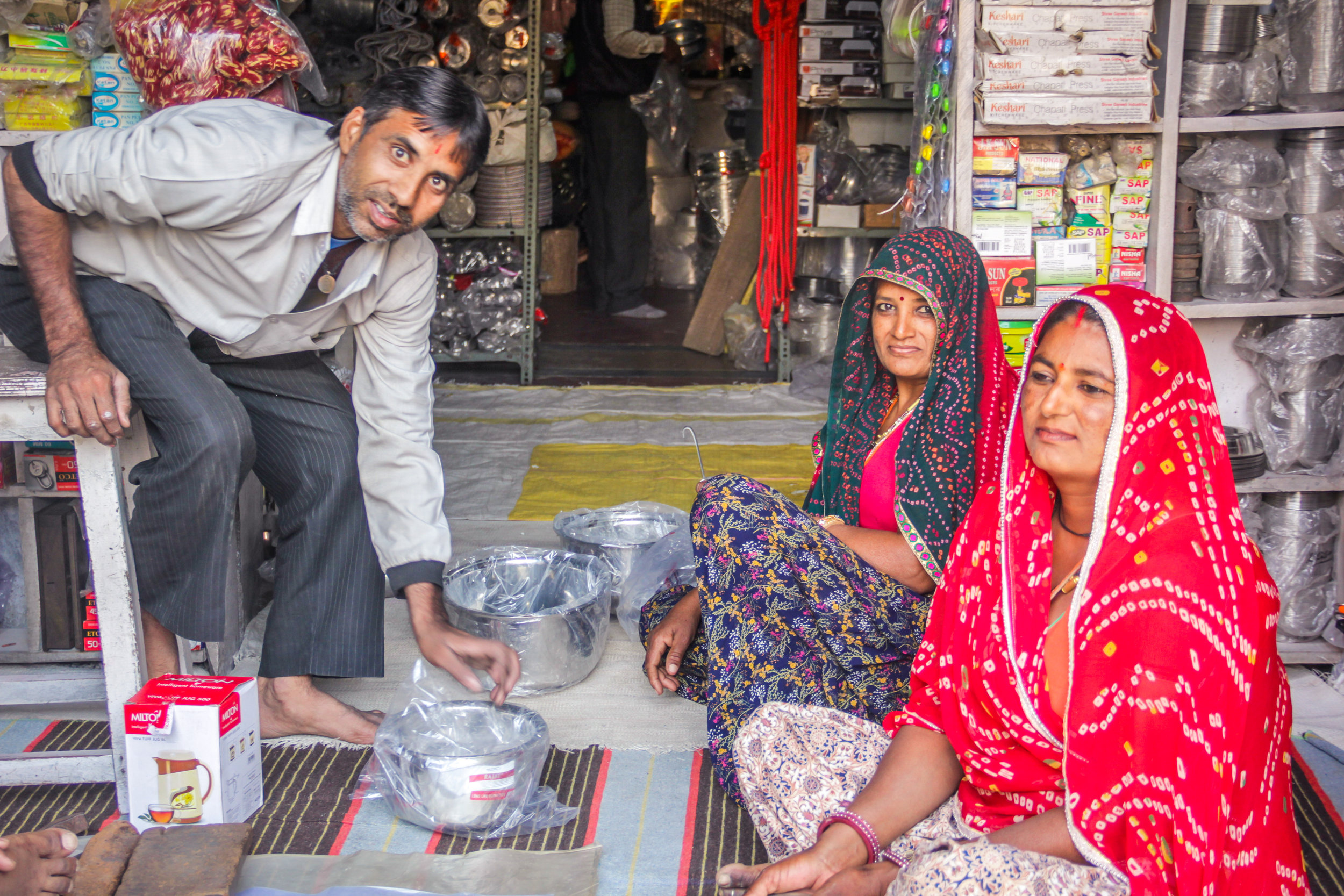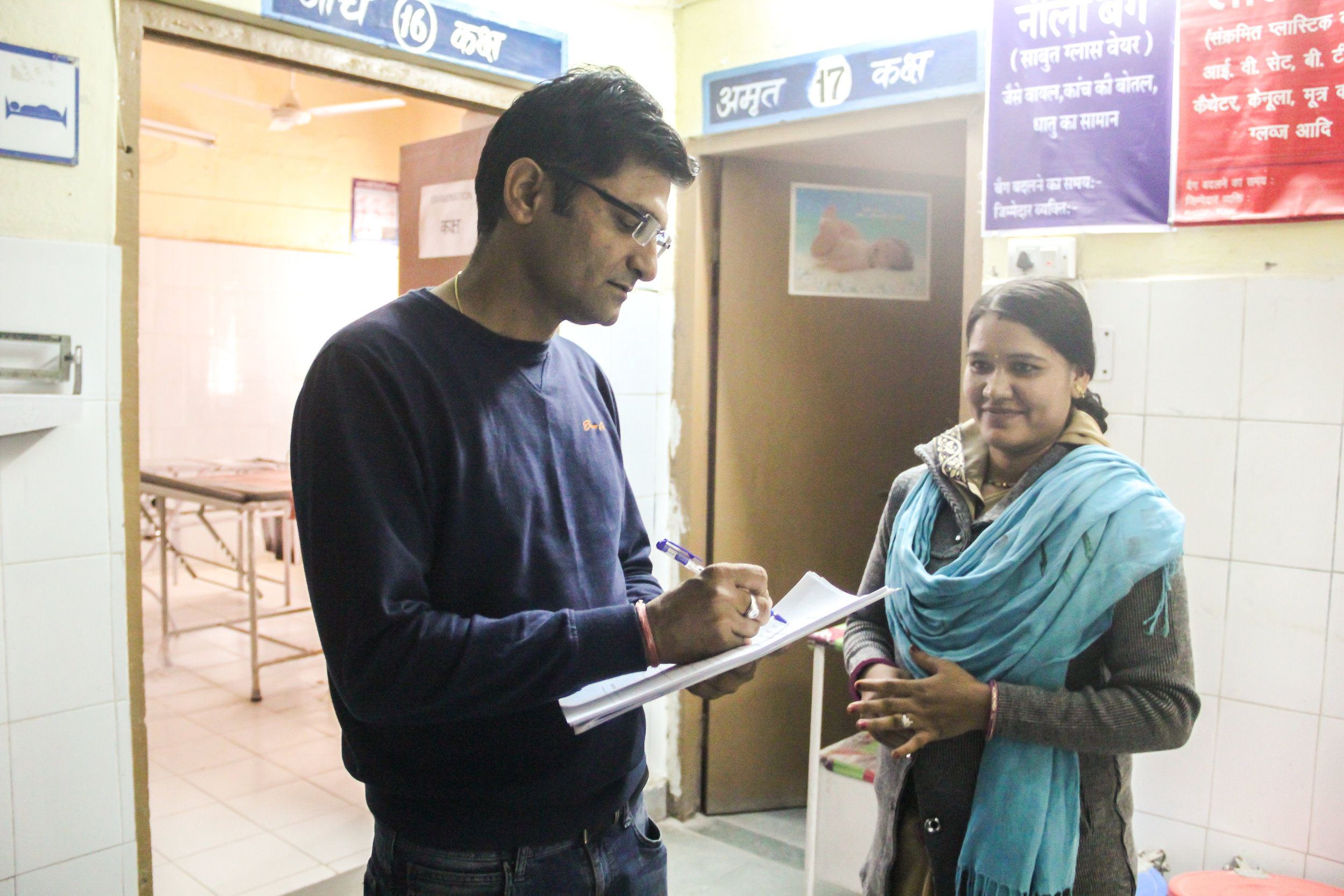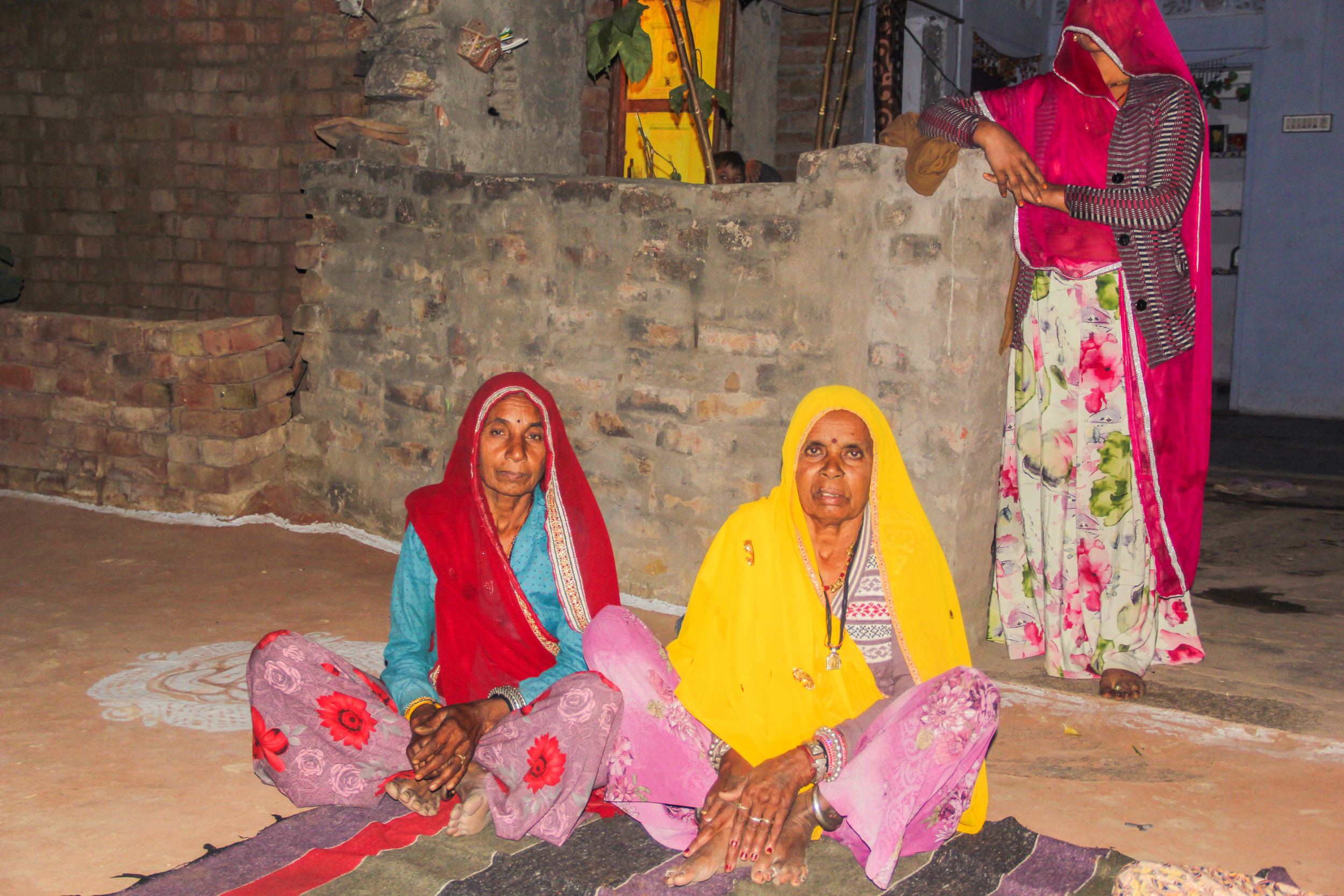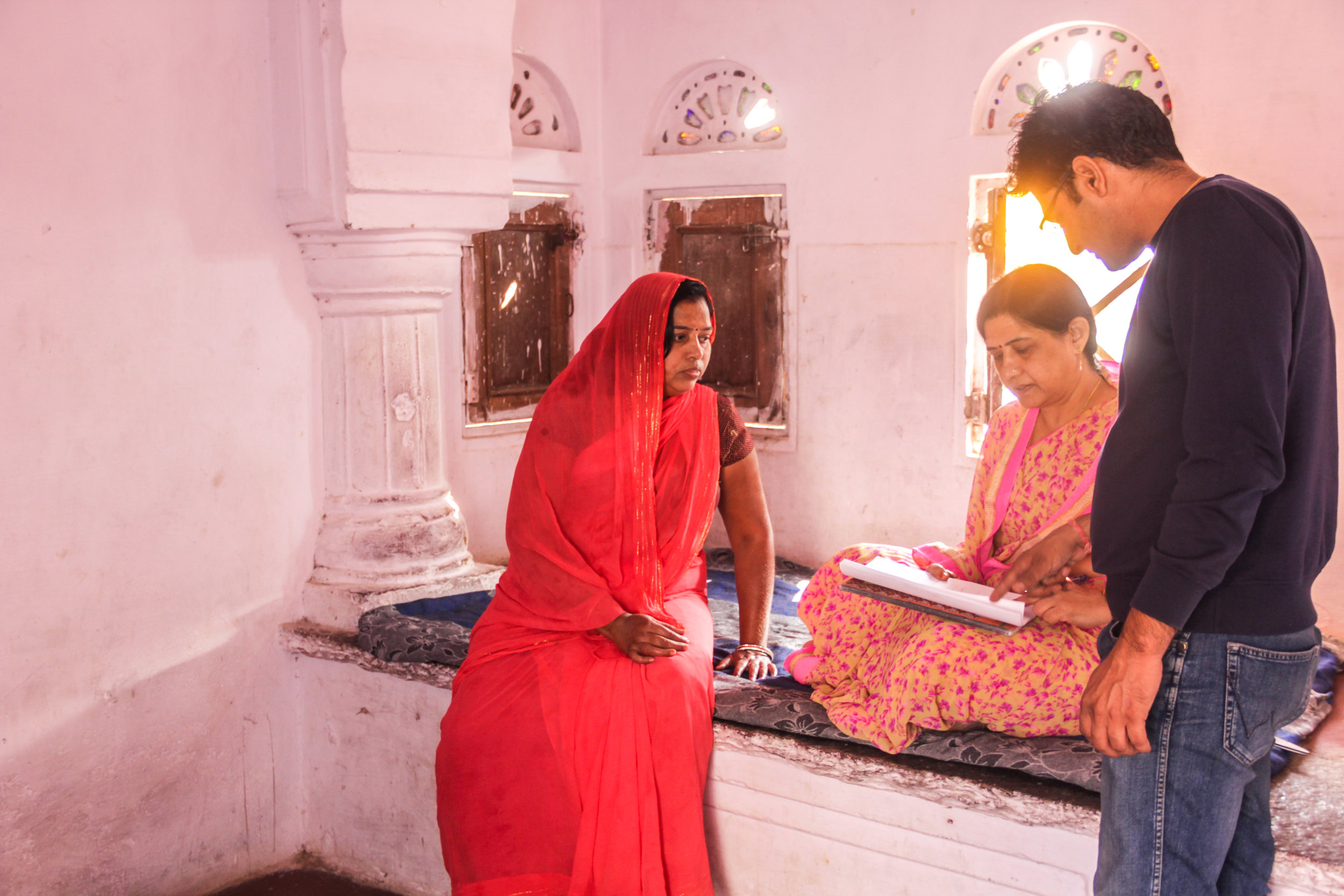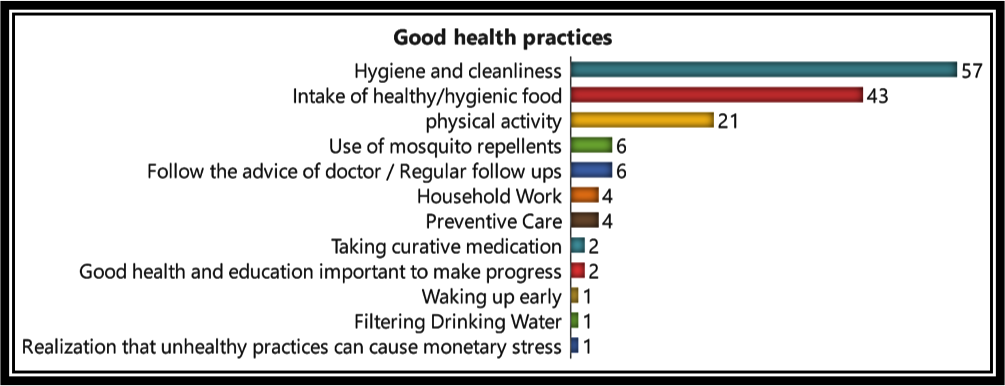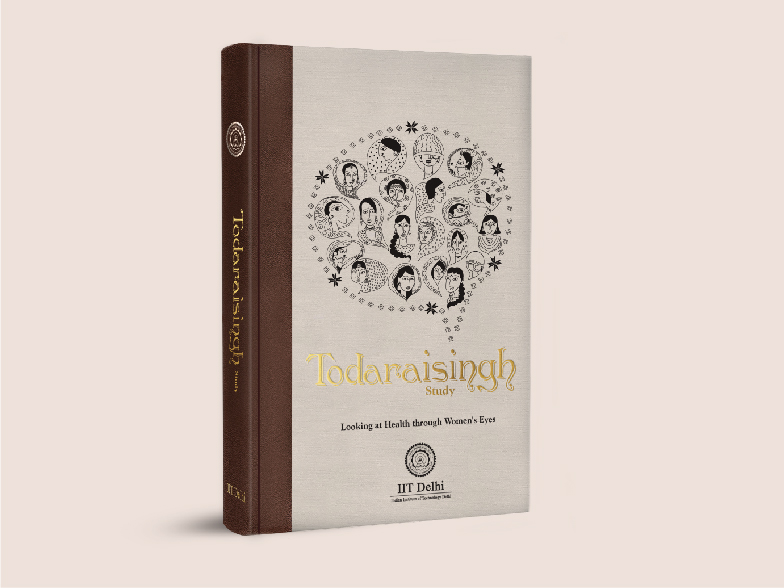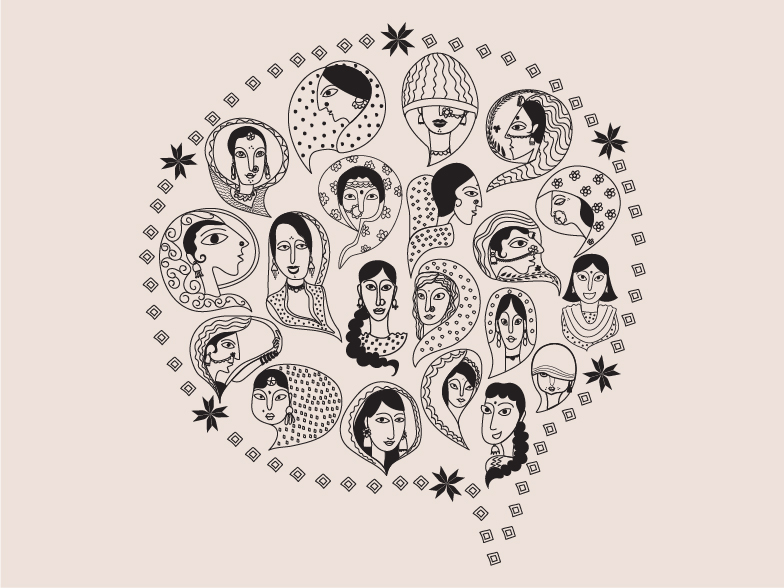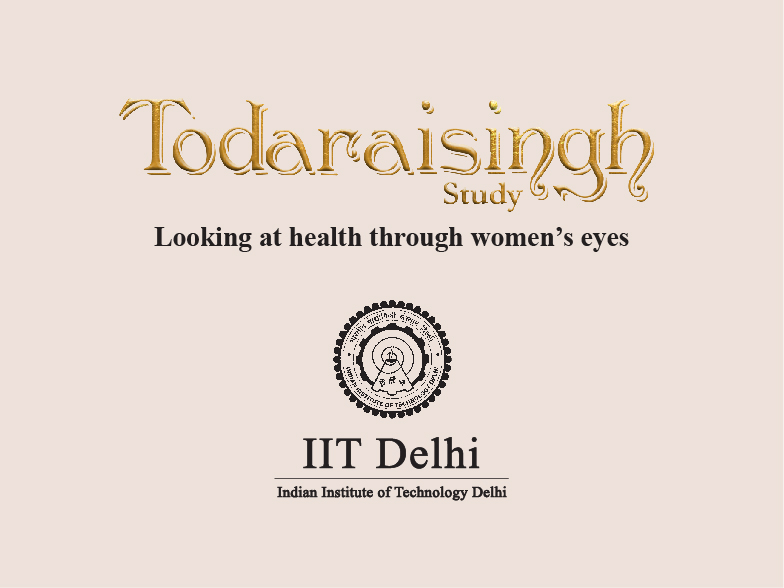Diagnostic study for identification of central themes for women using Grounded Research in Todaraisingh
Disclaimer: The photos are published after taking the due consent and cannot be reproduced without prior approval of IIT Delhi
Introduction
For identification of the themes on which communication may be designed to generate health awareness, an exploratory diagnostic study was conducted in semi-rural and rural regions of India’s north western state of Rajasthan as Rajasthan has one of the highest infant mortality rates according to National Family Health Survey 2015-2016 and is ranked low on key health outcomes by the government’s policy think tank.
Theme identification Using Grounded Theory Research Method
Using Grounded theory research methodology, we explored the healthcare concerns of women, recognized the idea of health from a woman’s perspective, and their involvement in taking healthcare decisions for themselves and their children. Furthermore, the study explored the methods and communication channels through which they can be involved in taking health care decisions for themselves and their families. Local women were selected as volunteers for initiating community engagement and for visiting households to interview 80 other women in Todaraisingh, Rajasthan after their informed consent. Grounded analysis of the transcribed data through the procedures of open coding, axial coding and selective coding led to critical inferences and emergence of a central phenomenon. Antenatal and postnatal care for maternal and child health along with associated issues was identified as the key theme for engagement for women and people who affect their decisions. It was also recognized that due to less permeation of technology in the households especially women, in-person communication would be the most effective method of generating awareness and engagement among women there.
Channels of Engagement
Outcome of the study
A coding paradigm was developed after interpreting the outcomes of the study. Antenatal and post natal care (Maternal and Child Health) was recognized to be the core theme on which women in a semi-rural Indian setup can be engaged. The relationships of the core theme with other categories that emerged from the analysis were identified through evidences from the literature.
CODING PARADIGM
Interpretation of good health
GOOD HEALTH PRACTICES
Determinants of a healthy mother and child identified from the exploratory study
REPORTED SOURCES OF INFORMATION FOR HEALTH COMMUNICATION
categories EMERGED THROUGH ANALYSIS
*The multimedia cannot be copied for personal use & without permission
CORE THEMES & SUB THEMES
*The multimedia cannot be copied for personal use & without permission
The outcomes of the diagnostic study were developed into a book titled, "Todaraisingh Study: Looking at health through Women's Eyes". This book (ISBN 978-93-8833-328-3) was inaugurated in the Jaipur Literature Festival 2019 and was well received.
We also exercised the Festival platform to know what health themes were of interest to the visitors in terms of getting more information, support and resources for them. Analysis of the data revealed physical fitness, balanced diet and nutrition, and mental well being as the pressing issues and social media platforms as the most effective channels of communication.
Validation of the Study Outcomes
Validation of the identified themes was carried out in form of an experts’ panel at Jaipur Literature Festival, 2019. The experts Ms. Naina Lal Kidwai and Ms. Namita Waikar in conversation with Mr. Govindraj Ethiraj reiterated the challenges we identified from the field in terms of uplifting health status of Indian women and involving them actively to improve it. They acknowledged women as the potential audience for engaging on health, agreed with the findings of the study and gave a few suggestions. We validated the themes with other experts as well by conducting a workshop with coordinators from 14 higher education institutions of Delhi/NCR and also with foreign experts from Bradley University.
Diagnostic Study Locations
Todaraingh
Todaraingh is a community block in the Tonk District of Rajasthan.
Specific observations from initial study are:
Todaraisingh is a Tehsil with good civic infrastructure, and many picturesque tourist sites. Potential of tourism development.
It has many good private international schools. Girls' attendance in school seems good.
Authorities seem particular and take interest in the area in terms of providing services such as mobile clinics and ambulances.
The area has Pakka Houses and Planned structures.
Health facilities seem satisfactory at this place. Community Health Centre (CHC) was neat, clean, with a good attendance of doctors, and one gets a good feedback from the residents nearby.
There is a social segmentation of localities based on caste.
Harijan Basti is a place for lower caste people, segregated from other places. There are no street lights. Harijan Basti is dirty mainly because pig rearing is one of the occupations of Harijans. Beldaars also reside in Harijan Basti. Many Harijans work for Nagar Palika.
Community Health Centre (CHC) is used for deliveries (many/most). A lot of the deliveries are normal. People are aware about the worker and know who she is.People often approach local doctor at the CHC for any common ailments. Otherwise, for further severe issues, they are directed to Malpura and Jaipur.
The hospital / CHC has a good display of information posters, pamphlets and charts to disburse all the necessary information to the public regarding health care. Clean facilities for pre natal, ante natal care, post natal care are accessible. Road to the hospital is well built.
Mobile health buses provide pathological test facilities. Dental health vans are there to cater to dental conditions of children.Presence of fluoride in water affects children’s teeth and bones. Hence tooth problems are common there. Mobile dental clinics therefore perform dental check-ups.
Ambulances are available and emergency phone numbers are well advertised and known among the people.
Dengue and chikunguniya test services are not provided here. People have to go to Jaipur for that.
Bhamashah Health Insurance Scheme is also available. There is a booth that is placed right outside the CHC that helps in getting a Bhamashah Card. Free medicine booths are also available in the CHC.
The health camps are a regular feature of the place and people know about them.
Houses have toilet structure but people may not be using it.Public schools also have toilet structures used by children.
E-mitra centres are there as the interface between rural population and technology, to provide certain citizen services. Moreover, a skill development centre, ITI, is also present there.
People possess basic mobile phones.
The multimedia cannot be copied for personal use & without permission
The multimedia cannot be copied for personal use & without permission
The multimedia cannot be copied for personal use & without permission
The multimedia cannot be copied for personal use & without permission
Gulgaon
It is a village in Kekri
It has toilet structures in houses and public places.
The place has schools.
People use mobile phones and youth also know how to use internet.
Issue of bigamy is also reported by a few people.
The multimedia cannot be copied for personal use & without permission
The multimedia cannot be copied for personal use & without permission
The multimedia cannot be copied for personal use & without permission
SAWAR
It is a recently formed tehsil, 25 km away from Kekri. It is a politically strong and influential place.
The place is famous for its around 200 marble mines.
The road connectivity is fairly good to sawar.
There are senior secondary schools as well as primary schools. (on visiting a primary school, it was identified that it has a poor sanitation and improper toilet and drinking water facility. The classrooms do not have a sitting arrangement, students sits on the floor and study in their classes. The school building seems to be an old structure. )
A sahkari samiti office to help farmers can be seen in place.
Aanganwadi centre is also present there with Aanganwadi workers performing their duties regularly who report to CHC.
CHC has 01 Doctor, 04 nurses, technicians and others making a team of 20 people. CHC has 30 beds, diagnostic lab, CHC organizes a monthly camp of laparoscopy.Team of doctors from Kekri also comes to the area to organize health camps.
Skill development centres for women also are in place to train women in vocational areas like making pappad, cleaning pattals, stitching and beauty parlor courses.
Handicraft and carpet making are also the occupations in which many people are involved. Carpets are being sold in Jaipur and Ajmer.
Embroidery is also a a means of livelihood for some by a few people.
The area has three banks and 80% people have their bank accounts.
The major source of employment of the male population of this area is through the marble mines. The people of the area are well aware of the mining policies and protocols to be followed.
The area CHC is equipped with a digital X-ray machine as due to the marble mines and cutting of marble the people are prone to silicosis disease.
Women are involved in physical labour like “ beldari – construction labourers”, extracting vegetables and farm labour.
The soil here in the area is black soil and domut soil. The area also has cotton plantation.
The authorities here take keen interest in the development of the area.
CHC also provides the JSY card to pregnant ladies, to get the govt facilities on stay of 72 hours after delivery.
Literacy rate of the area is very high.
Usage of mobile phones, internet and government portal services is prevelant with the inhabitants here.
The area hass 10-15 cases of cancer majority of which has blood cancer. It was also informed that the CHC do not have an orthopedic and injury department as most of the mining workers working on the marble cutting machines gets injured and their limbs gets cut while working on the machine.
Kushayata
The village Kushayata is 5-6 km away from Sawar
It has around 500 households.
The area is affected by fluoride contaminated ground water. The villagers here have distorted bones, weak and decolorized teeth due to fluoride.
Only 40 % of the entire household has the toilet facilities in their houses.
The houses are kuccha construction made up of mud wall and thatch roofs or khapral roofs.
The source of employment is physical labour under Narega scheme and agriculture field work.
People do not have toilets and open defecation is prevalent.
The school provides girls with the sanitary pads to keep menstrual hygiene.
The asha workers visit the village to provide information on health and hygiene.
There is no CHC or PHC in the area, and the nearest hospital is in Sawar.
The deliveries takes place in the households only.
People use smart phones, have television sets and know about internet, whats app, social networks and IT technology.
An Atal Seva Kendra and a govt senior secondary school is there in the area.
The multimedia cannot be copied for personal use & without permission
The multimedia cannot be copied for personal use & without permission
Kekri
Kekri is quite developed and a Municipal Block in Ajmer District, around 120 - 130 km from Jaipur.
The place is known for its mustard production and oil mills, and has testing labs to determine the quality of mustard seeds to ascertain the pricing of the crop.
The major source of water is Bilaspur and Para Dam, the water supply is used for drinking, irrigation and other purpose.
The block has a CHC, a Government higher secondary school and an IT centre named Atal Seva Kendra.
